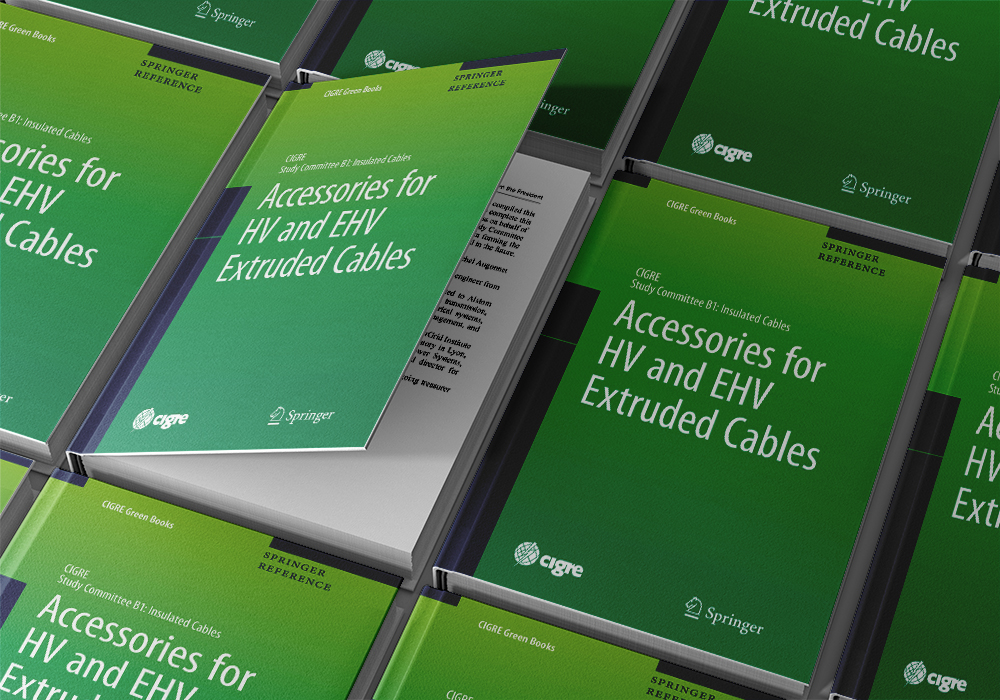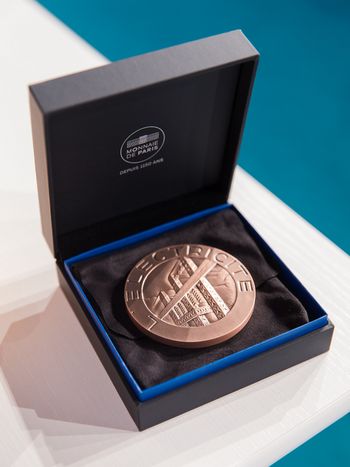New CIGRE Green Book: Accessories for HV and EHV Extruded Cables
This Green Book on Accessories for HV and EHV Cable systems aims at describing the cumulated experience gained by CIGRE experts in the domain of Accessories for Transmission Underground Systems during the last 25 years. It covers relevant issues in cable system design, cable design, submarine cables including off shore generation connection. It provides comprehensive and unbiased information, essential recommendations and guidelines for design, installation, testing and maintenance of accessories to professionals through the exceptional expertise of CIGRE.

This publication is divided in two Volumes covering land and submarine applications, HVAC and HVDC systems, transitions from lapped cable systems to extruded cable systems, from Overhead lines to Underground cables and from cables to substations. This Volume is dedicated to Components while Volume 2 to be published later this year will deal with Land and Submarine AC/DC Applications.
It is well known that the reliability and performance of a cable circuit is dependent in equal measures on the designs of the cable and accessory and on the skill and experience of the person who is assembling the accessory. The cable insulation is manufactured in the factory under controlled process conditions using selected materials of high quality. It is equally important that the same quality measures are employed for the manufacture of the accessories in the factory and for their assembly on site onto the specially prepared cable.
It is essential to select the design of accessory to be exactly compatible with the particular cable type and the particular service application. Compatibility should be validated by electrical type approval tests and be supported by either prequalification tests, or satisfactory service experience. In particular the performance of the accessory is dependent on the quality, skill and training of the jointing personnel and on the use of the specialized tools required for a particular accessory.
The chapters of this book form the basis of the information that is needed by the manufacturer and installer of the cable and accessories. For many applications the cable manufacturer also manufactures, supplies and installs the accessories as part of the complete cable circuit. In the event that the user purchases the accessories separately from the cable, he will find the basis of the information (including tests reports) that should be needed to obtain the appropriate performance of the system, both in the case of a new underground line or in the upgrading process of an existing line.
This Green Book has been authored by leading industry, research and academic professionals, acting as members of Working Groups, who published Technical Brochures and prepared Tutorials, providing all stakeholders with high quality and unbiased information.
Chapter One is a Compendium of accessory types published in 1994. This important document is still relevant and is the basis of the methodology in use for the preparation of international standards
Chapter Two is a guide for the selection of accessories. It reminds the basics of the good performance of accessories as part of cable systems and welcomes and supports the idea of a “cable system test” promoted by CIGRE.
Chapter Three points out the importance of the interface between accessory and cable in the cable system life and makes recommendations to include this important parameter in the discussions around international standards
Chapter Four is one of the most important tools for the best understanding and use of the international standards. It proposes a new test to monitor the changes in a qualified cable system. This new test is called Extension of Qualification Test. Functional analysis is promoted as a tool to help engineers to identify the necessary tests to perform in case of change in the design of an accessory (materials, electrical field, …)
Chapter Five reminds how to make sure that manpower in charge of jointing is correctly trained and qualified to handle the preparation of accessories when electrical fields are continuously growing due to use of cables at higher and higher voltages (500 kV).
Chapter Six analyses the causes of failure of accessories and proposes ways to maintain the integrity of the accessories all along the cable system life.
Chapter Seven is a first step towards standardization of GIS terminations to minimize the installation time and the fluid handling. It states that such standardization is achievable in the 72,5 kV/ 145 kV range and recommends to go further in this way.
Chapter Eight gathers the recommendations of CIGRE for the testing of Transition joints between lapped and extruded cables, making it possible to upgrade existing lapped underground lines up to 500 kV.
Chapter Nine deals with the thermal rating of accessories and draw the attention on the fact that the rating of a cable system must take into account the installed accessories.
Chapter Ten focuses on the conductors connectors used in the accessories and establishes recommendations on how to test them, including plug-in connectors.
Chapter Eleven, completing the work published in Chapter 7, proposes a Standard option for a Completely Dry and Plug-in GIS termination at 72.5 and 145 kV Levels. It should be noted that this design was already included in the Compendium of Chapter One more than 25 years ago as a possible extension of MV accessory.

The Green Book is available for purchase on our partner's website Springer.
If you are an CIGRE Member, please contact us to benefit from a 40% discount on your purchase (please indicate your active member number and your National Committee in your message).







